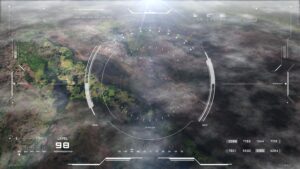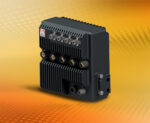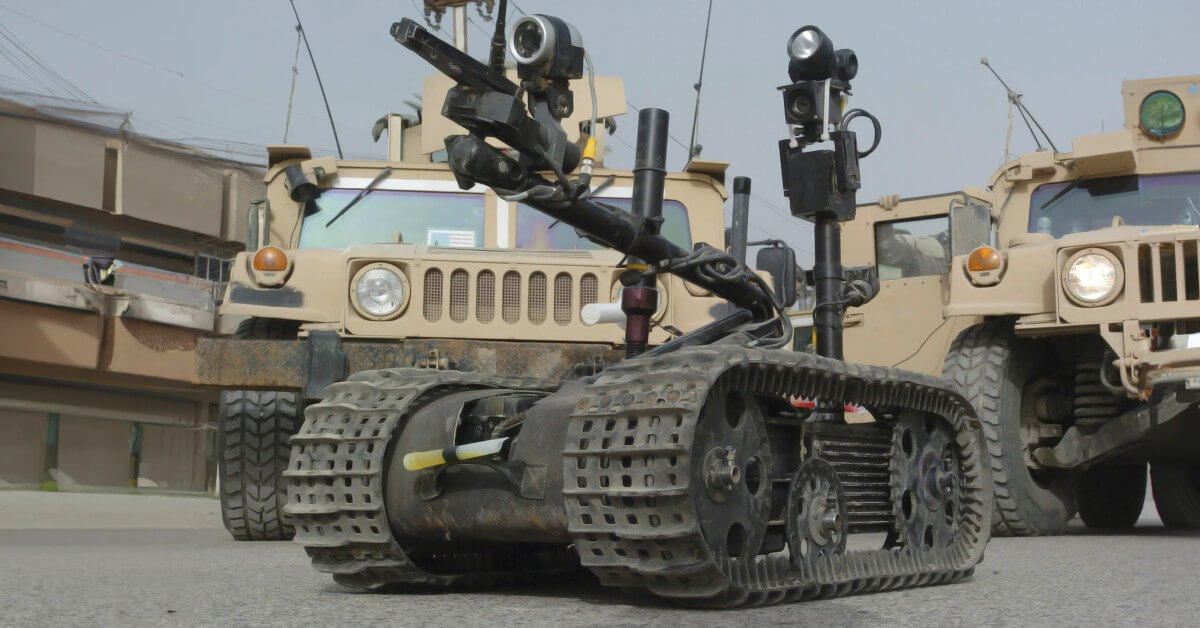Unmanned Ground Vehicles (UGVs) have been developing at a fast pace with the advances in Artificial Intelligence (AI), Machine Learning (ML) and telecommunications as well as the development of the Digital Backbone (DBB), a unified communications infrastructure for digital technologies. Coincidentally, as the demand for autonomous technologies increases in military and defense applications, more UGV innovations have emerged, bringing new challenges in the market, as well. The introduction of UGVs into combat is a game changing evolution of warfare.
Stakeholders at the strategic, operational and tactical levels harness germane elements of the information flows applied to UGV systems to best execute their missions. The entire system is stitched together with a robust set of communication links, but this does not mean everyone receives all information, as that would leave everyone drowning in data. Instead, it entails allocating the right information to enable organizations to achieve enhanced effects in their specific areas of responsibility.
Information Utilized Across All Domains
This brings into play the Joint All-Domain Command and Control (JADC2) approach put forth by the Department of Defense (DoD). JADC2 is a strategy for developing the warfighting capability to sense, make sense, and act at all levels and phases of war, across all domains, and with partners, to deliver information advantage at the speed of relevance.
This approach looks to use AI, ML, autonomy and other advanced capabilities to better connect sensors and shooters, and reduce the time to bring lethal and non-lethal effects against an adversary to influence multidomain operations. Objectives such as lowering the cognitive load of warfighters and decision makers as well as decreasing the time of detection to engagement decision to gain advantage represent just some the requirements, risks, and technical challenges being addressed by the DoD.
UGV Shifts Command, Enhances Control
Unmanned ground vehicles have shifted the way the world sees military defense. Rising trends like explosive ordnance disposal (EOD), combat use as well as intelligence, surveillance and reconnaissance (ISR) have skyrocketed the UGV market to the forefront. Applying UGVs in combat or reconnaissance missions reduces the reliance of dangerous efforts on humans as well as navigate into places and situations that are more remote or hard to reach. This is especially critical in EOD and other volatile military operations.
With UGVs employed in combat, they become direct fire support for soldiers and allow for additional supplies and heavy weaponry to be transported. The discussion to develop ISR UGVs centers on helping increase the survivability of UGV units in combat. ISR will increase the tactical unit’s reaction speed on targets as well as stand off distance from enemies. Advancements in UGV capabilities are expected to support the growth of this market in the military segment in the coming years.
Unmanned ground vehicles have the potential to revolutionize military navigation. However, with unique challenges, including basic mobility in unstructured terrain, extreme weather, cybersecurity and power supply, UGV development has struggled to advance. Addressing these challenges and developing suitable products for the future of UGV technology cannot be ignored. Below we look at one example of addressing the key risks in conducting wet gap crossing operations and potential technical solutions using AI/ML and other critical technologies.
Real-world Challenges: Wet Gap Crossing Operations
 One of the most complex ground-based scenarios of note is wet gap crossing operations, which are important to enabling maneuver forces to close with and destroy enemy forces. However there are distinct logistical challenges in planning and executing these critical operations.
One of the most complex ground-based scenarios of note is wet gap crossing operations, which are important to enabling maneuver forces to close with and destroy enemy forces. However there are distinct logistical challenges in planning and executing these critical operations.
When successfully executed, a wet gap crossing operation can provide one of the most valuable fundamentals of war – speed. Tempo is the key to seize the initiative, prevent enemy reconnaissance and exploit success. Executing a safe and efficient wet gap crossing allows friendly forces to set conditions necessary for success.
Since most future breaching assets will likely be conducted using unmanned or optionally manned systems, large amounts of data will need to be secured and transmitted across tactical networks to synchronize reconnaissance and security, maneuver, fires, logistics, and other warfighting functions. At the macro level, JADC2 involves gathering massive quantities of data through a broad range of distributed sensors and processing it into actionable information.
Employing unmanned systems and technologies in operations such as a wet gap crossing, decisions must be made “at the edge” and not remotely from a command center. This significantly minimizes the latency and provides flexibility in a rapidly changing environment. AI at the edge (AIAE) refers to deploying artificial intelligence algorithms on devices physically close to the data source, a critical component of today’s UGV systems to ensure real-time intelligence from a remote, autonomous entity is provided back to the warfighter.
Today’s UGV Technology
 At Aitech, we seek to provide products that will overcome the challenges in the UGV industry, like those warfighters face in wet gap crossing operations. Our innovations include the latest GPGPU-based AI supercomputing, advanced cybersecurity features and leading-edge interoperability and performance. Aitech’s A179 Ultra-SFF Supercomputer is a low-power GPGPU-based system with data processing at the edge that delivers more performance than any other rugged system on the market in a similar form.
At Aitech, we seek to provide products that will overcome the challenges in the UGV industry, like those warfighters face in wet gap crossing operations. Our innovations include the latest GPGPU-based AI supercomputing, advanced cybersecurity features and leading-edge interoperability and performance. Aitech’s A179 Ultra-SFF Supercomputer is a low-power GPGPU-based system with data processing at the edge that delivers more performance than any other rugged system on the market in a similar form.
Our supercomputers enable situation awareness, and can handle the harshest weather and off roading environments. Unmanned autonomous products can be prone to adversaries, but Aitech has taken the steps to offer a cybersecurity framework, AiSecure, that increases the survivability and level of confidence in UGVs by detecting and preventing unexpected attacks. Products with AiSecure can prevent firmware and data breaches as well as reverse engineering all while allowing secure transmission and storage of sensitive data.
The team at Aitech is moving forward with new and improved ideas to create a more secure and suitable future for unmanned ground vehicles.



